Seoul, November 27 – January 31, 2015, Ilmin Museum of Art
Suki Seokyeong Kang 강서경 (, Eve Kwak 곽이브, MeeNa Park 박미나, Rahm Parc 박아람, Junghae Park 박정혜, Kyungho Baek 백경호, Nakhee Sung 성낙희, Hyangro Yoon 윤향로, Seungean Cha 차승언, Seung-Hye Hong 홍승혜
Without directly stating it, it seems that the exhibition focuses on identifying a certain style or movement (post-internet art or some variant of it), and it goes across generations, with birth dates spanning a range of 30 years, to do so.
The exhibition spreads over all three floors of the Ilmin Museum and artworks are generously spaced to allow them to breathe and unfold in front of the viewer.
On the ground floor one encounters Suki Seokyeong Kang, Nakhee Sung and Junghae Park, all three working in the medium of painting, with references ranging from modernist design and geometrical abstraction to Pantone color palettes, with Kang reaching out into the third, sculptural, dimension of painting.
The first floor contains a mixture of painting and painting-like works which originate in the planar landscapes of manga animation (Hyangro Yoon, Kyungho Baek) and computer graphics software (Meena Park), yet some of these references also reemerged as a three-dimensional form thanks to industrial production technologies like offset printing (Eve Kwak) or laser cutting (Rahm Parc).
The third floor is the most empty, and even the color toning is very gentle here, as both works only use white and a few shades of grey. The approaches used here point towards a world beyond software and internet, in which, however, our eyes cannot but see patterns they have been conditioned to see during the time spent engaging with the virtual world on the other side of the screen. Seungean Cha’s frames stretched with hand-weaved canvases look like digital artifacts visible on broken smartphone screens, even though in reality they do not have anything to do with them, and the work would be better understood in the tradition of post-painterly abstraction like the work of Frank Stella. Seung-Hye Hong’s printed and animated pixels could equally be seen as drawing on a strict formal language of the Bauhaus-school, yet our experience in the world of binary image information makes us to relate the minimal shapes and moves more with the computer game history from Pong and Pacman to Super Mario.
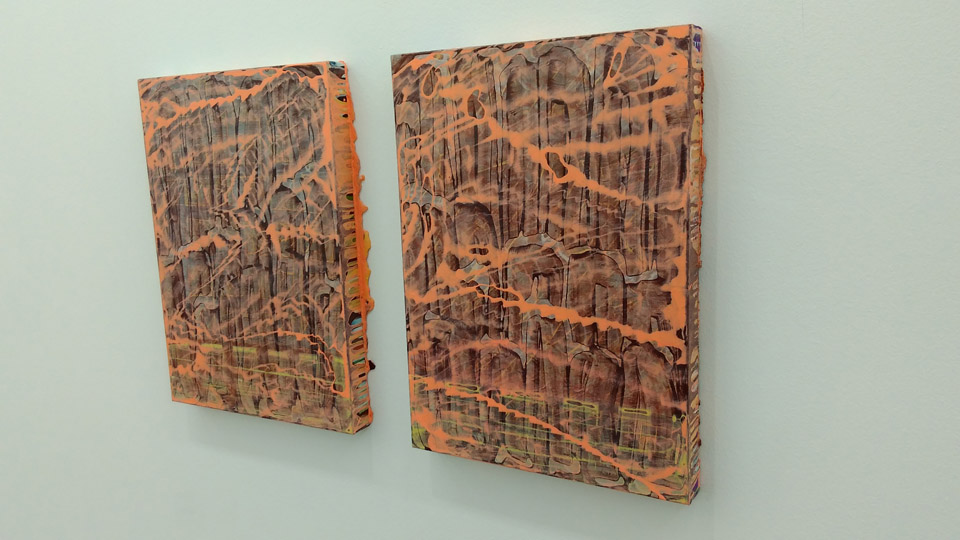
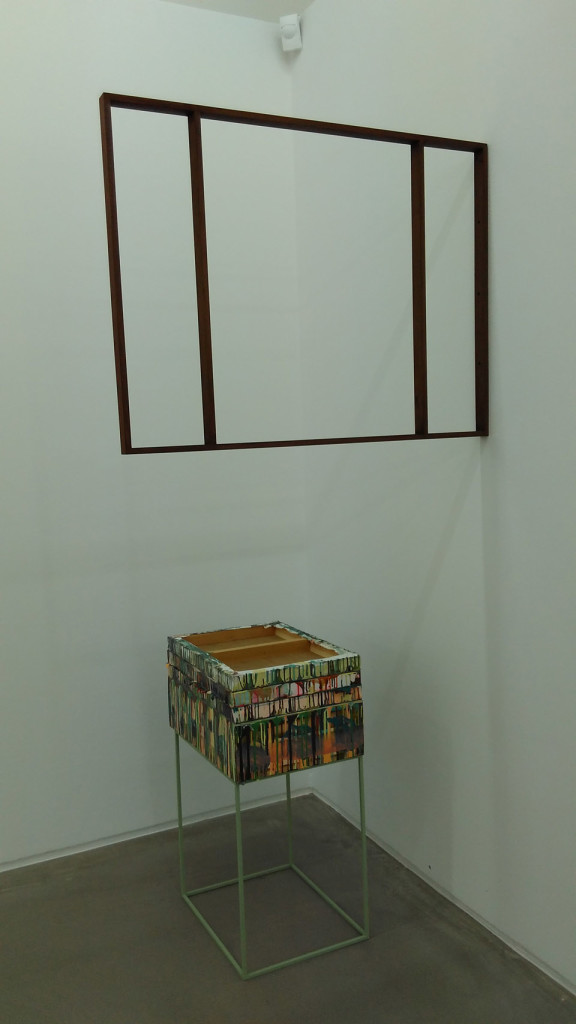
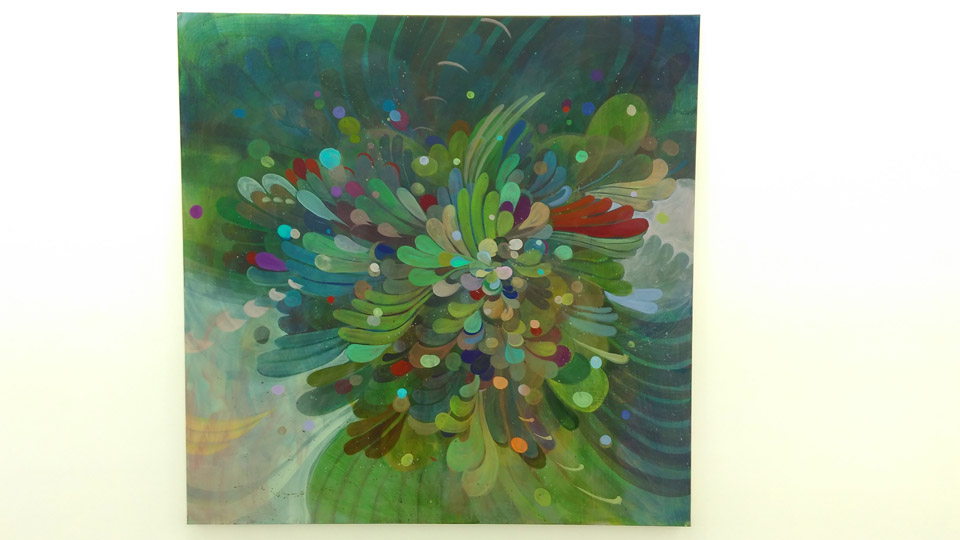

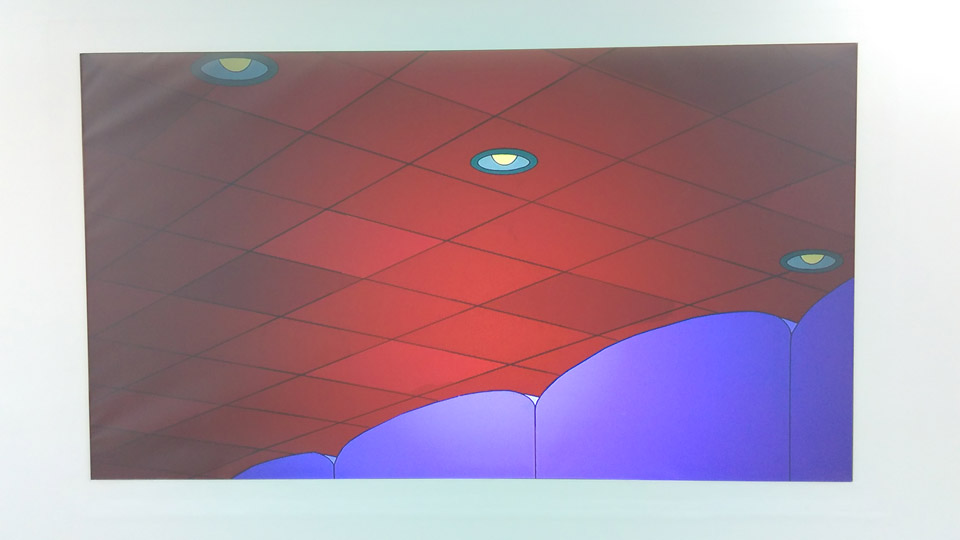
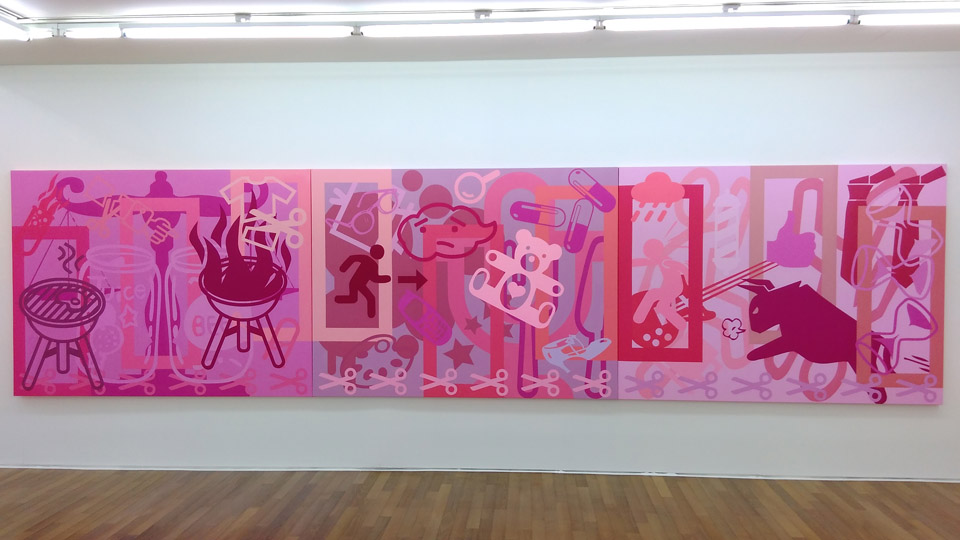
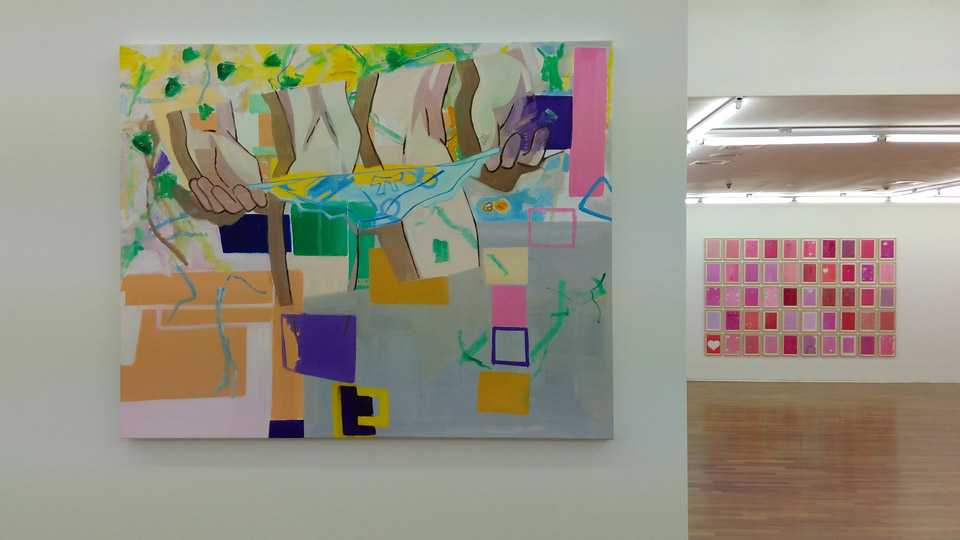
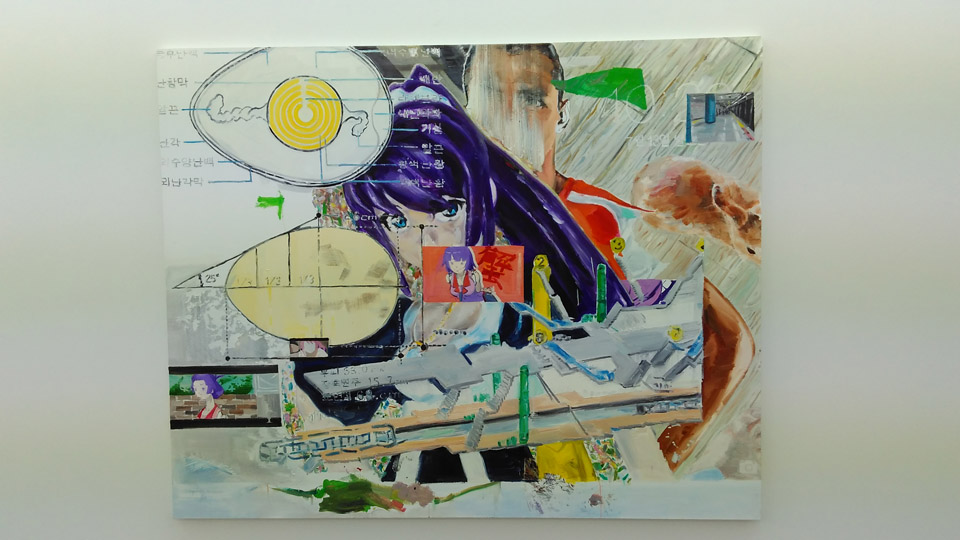
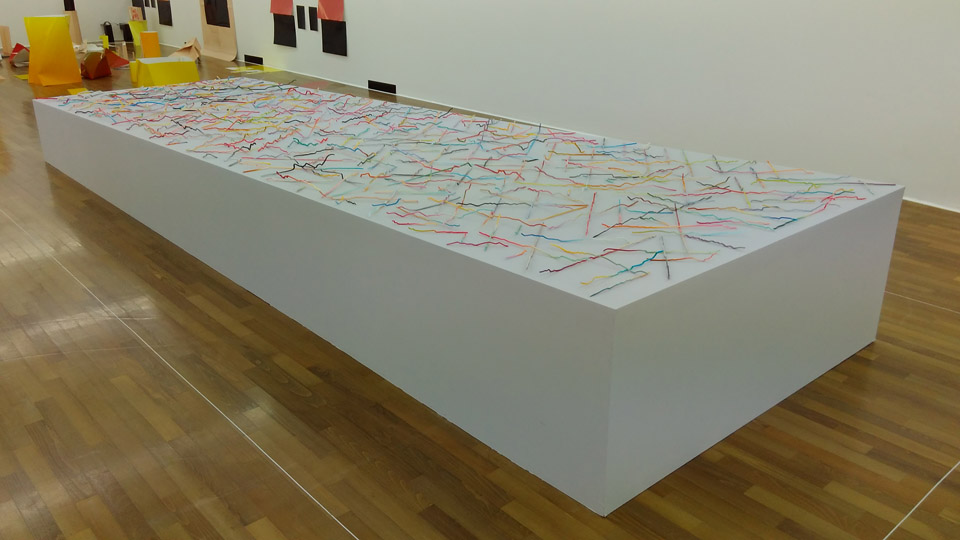
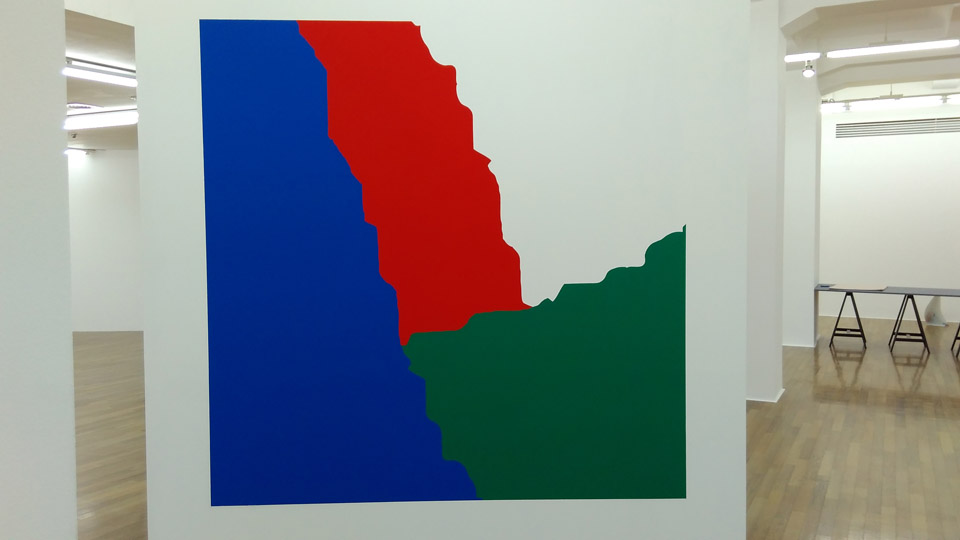
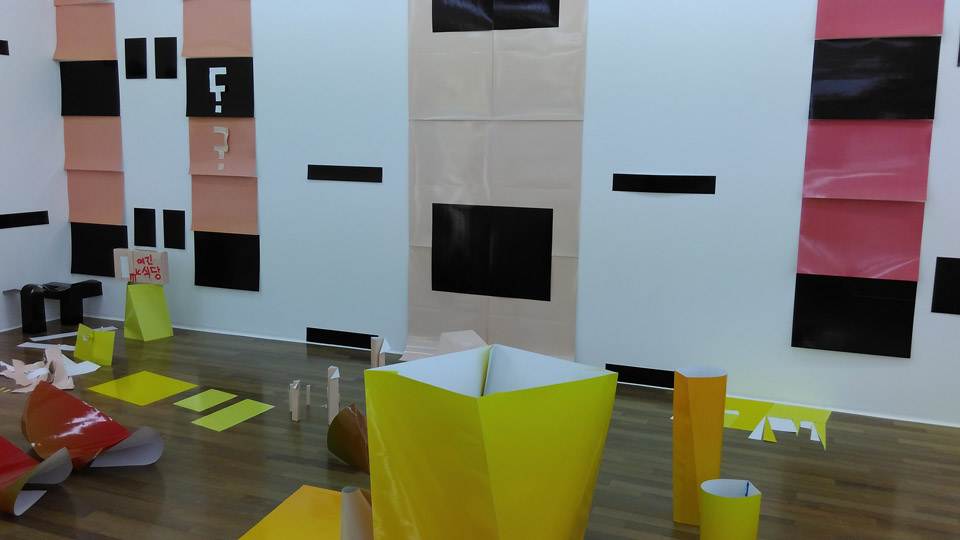
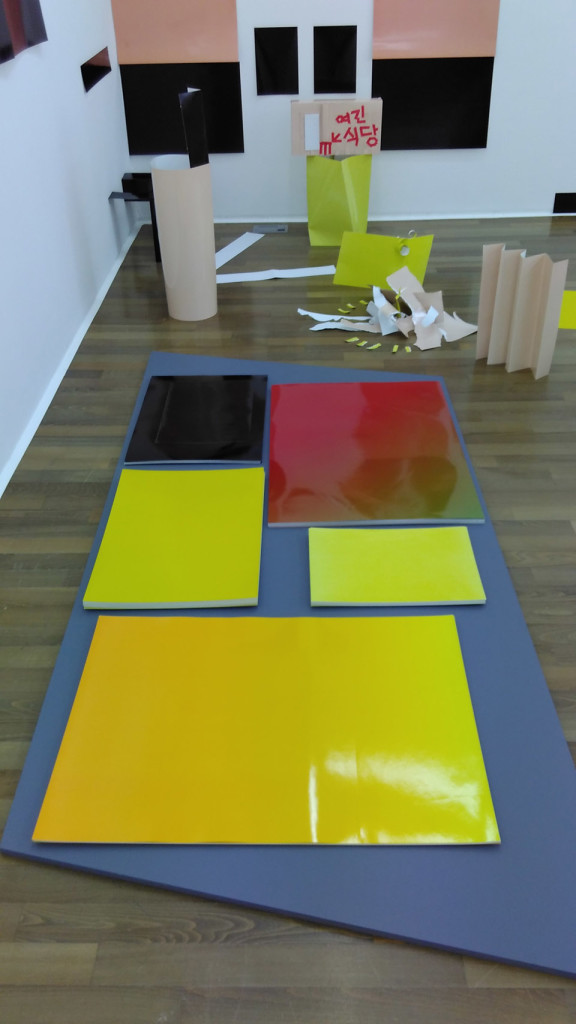
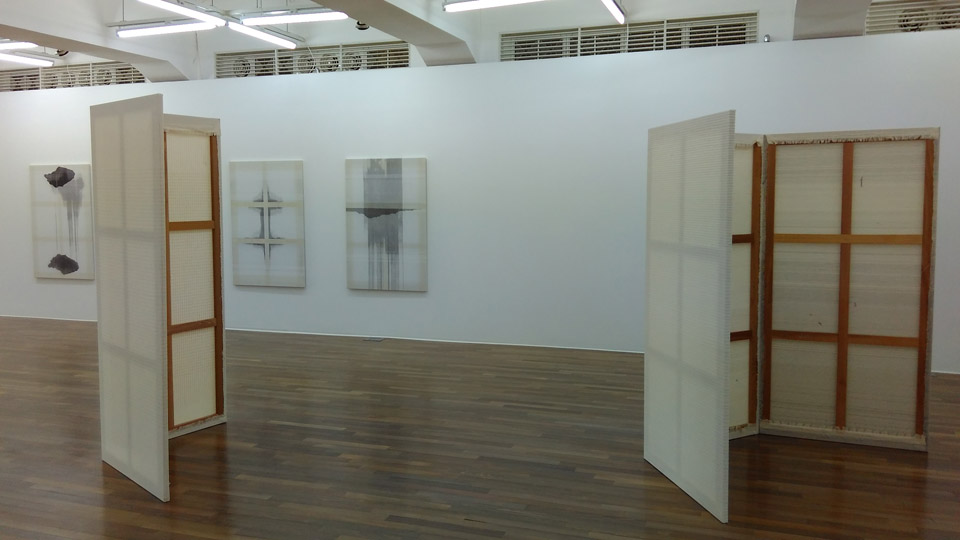
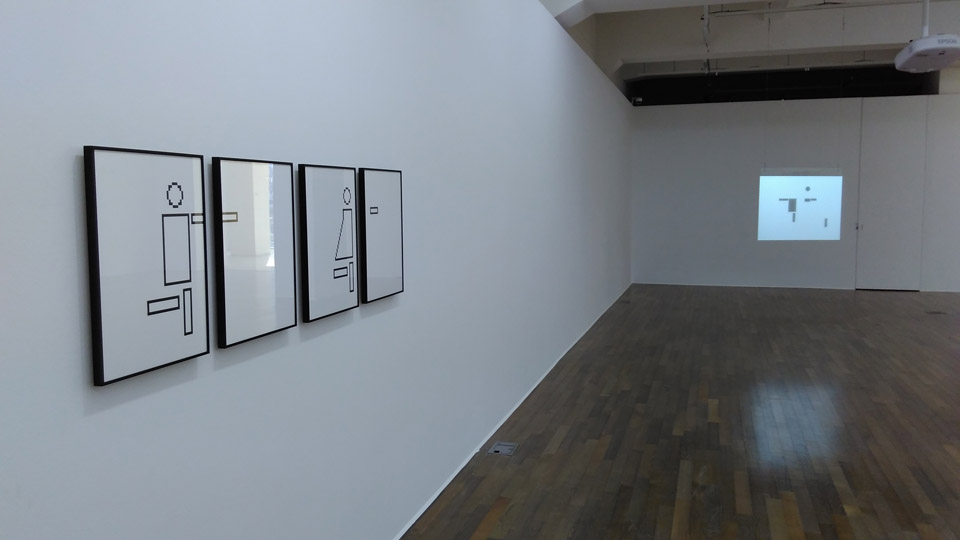
2 comments for “Ilmin Museum “Crossing Plane: Unit, Layer, Nostalgia””